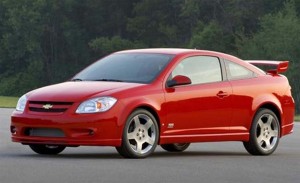
Despite booming sales in recent years, the average age of a vehicle on U.S. roads continues to rise.
Despite a five-year boom in new vehicle sales putting more than 85 million relatively new vehicles on the road, the average age of vehicles on America’s roads continues to rise.
The average age of light vehicles in operation in the U.S. has once again climbed slightly this year, to 11.6 years, according to industry experts at IHS Markit, a provider of business information and analysis for the global automotive industry.
Registrations cars and light trucks in the U.S. also reached a record 264 million — an increase of more than 6.2 million or 2.4% since last year. This represents the highest annual increase the auto industry has seen in the U.S. since it began tracking vehicle in operation growth, breaking a record set in 2015.
”(The) quality of new vehicles continues to be a key driver of the rising average vehicle age over time,” said Mark Seng, director, global automotive aftermarket practice at IHS Markit.
“The recession created an acceleration beyond its traditional rate due to the nearly 40% drop in new vehicle sales in 2008-2009. In the last couple of years, however, average age is returning to a more traditional rate of increase,” Seng said.
Seng said adding new vehicles to the fleet on the road is also a coup for the automotive aftermarket industry — those in components manufacturing, repair and service.

The average age of vehicles in the U.S. is rising so seeing a vehicle like this 9-year-old Chevy Cobalt on the road isn't surprising.
(Honda Civic named best overall buy for 2017. Click Here for the story.)
“Increasing numbers of vehicles on the road builds a new business pipeline for the aftermarket,” Seng said. “A larger fleet means more vehicles that will need repair work and service in the future.”
The average age growth of the vehicle fleet will bring new opportunity for the automotive aftermarket, the analysis says. The aforementioned 40% drop in new light vehicle registrations experienced during the most recent economic downturn is something that will be felt by those businesses involved in the aftermarket for years to come due to its significant impact on the various age segments of the overall fleet.
Consumers are continuing the trend of holding onto their vehicles longer than ever. As of the end of 2015, the average length of ownership measured a record 79.3 months, more than 1.5 months longer than reported in the previous year, according to IHS Markit.
(Click Here for more about Mazda’s reign as the U.S. fuel economy champion.)
For used vehicles, it is nearly 66 months. Both are significantly longer lengths of ownership since the same measure a decade ago.
Vehicles taken out of service for scrap during 2015 remained relatively flat compared with 2014, with just over 11 million light vehicles retired out of the fleet, representing about 4.3% of the overall population. This figure is significantly less than the record high of more than 14 million vehicles that were scrapped in 2012.
The shifting dynamic of the age of vehicles in operation indicates the volumes of vehicles in the new to five years-old category will grow 16% by 2021, while vehicles in the six to 11 year-old range will grow just 5%, and vehicles that are 12-plus years old will grow 10%, IHS said.
(To see what makers took top honors on U.S. News & World Report’s best brands list, Click Here.)
The oldest vehicles on the road are growing the fastest – with vehicles 16 years and older expected to grow 30% from 62 million units today to 81 million units in 2021.
